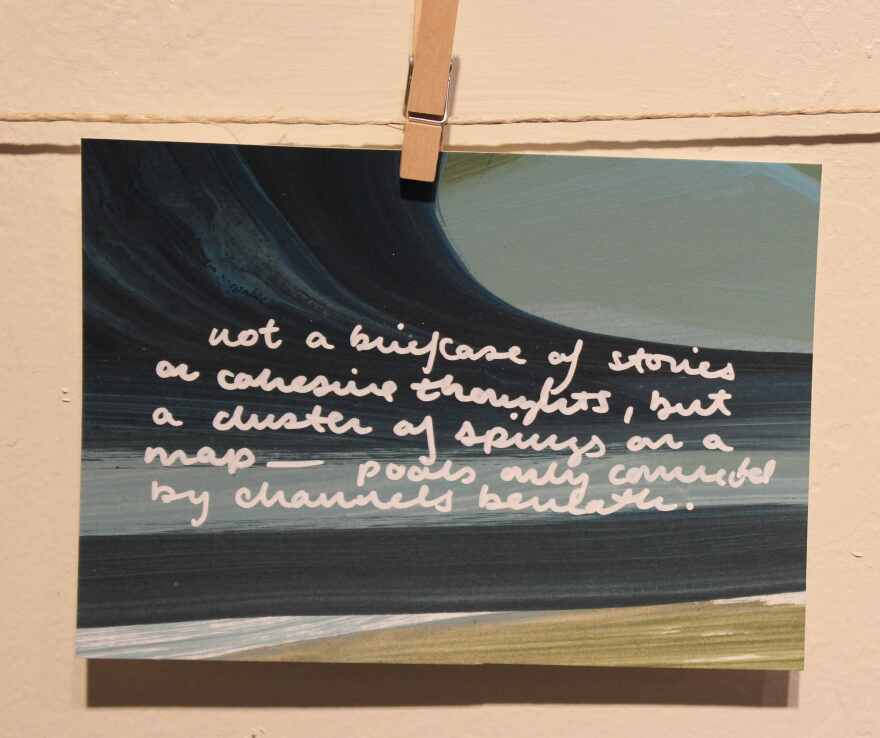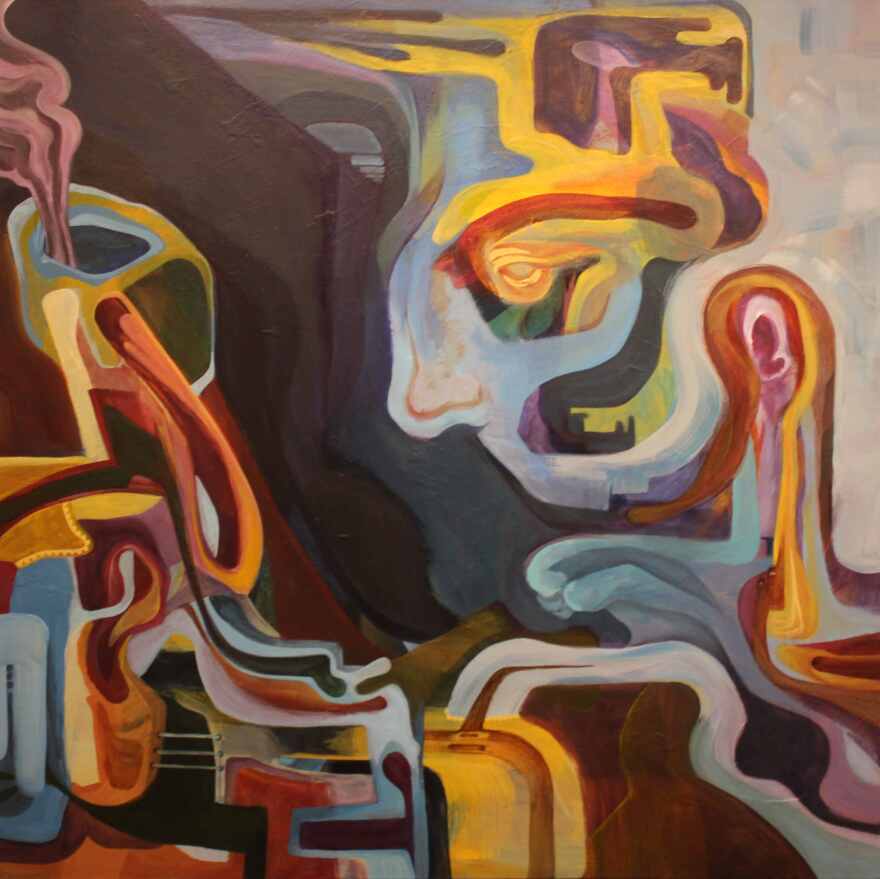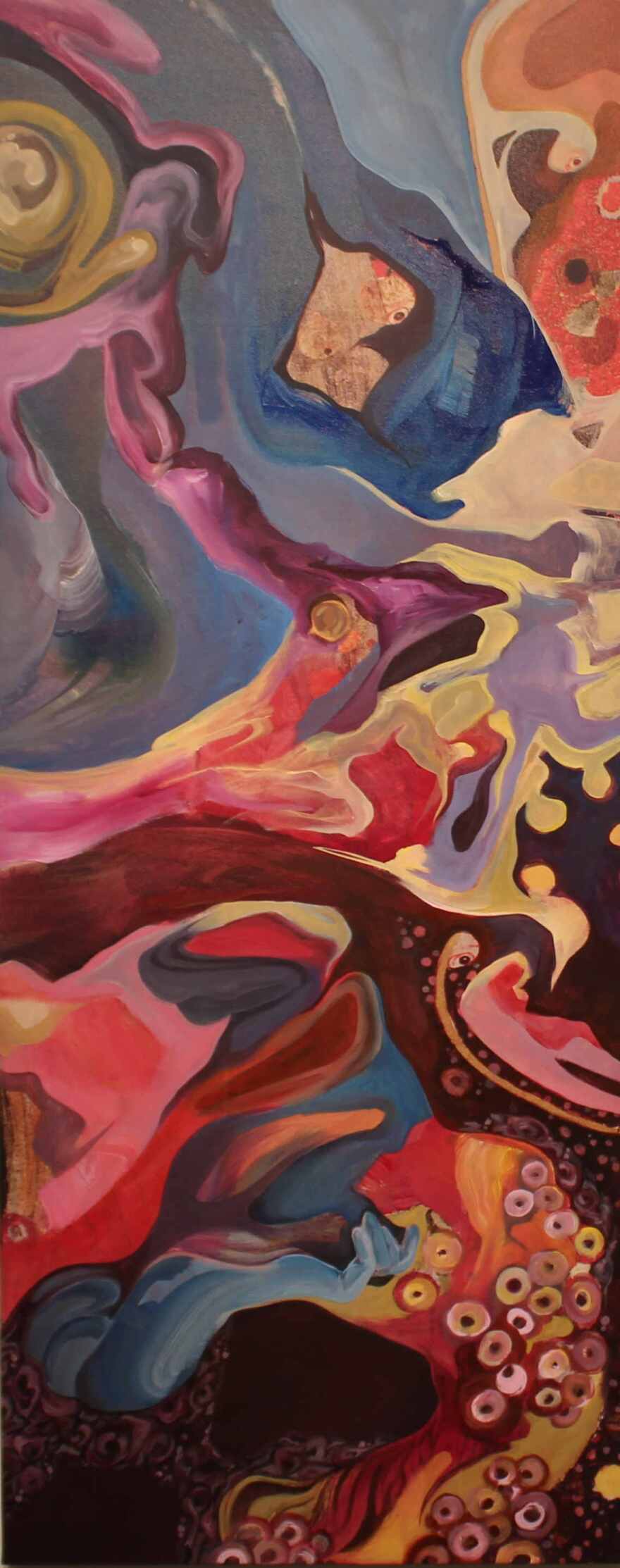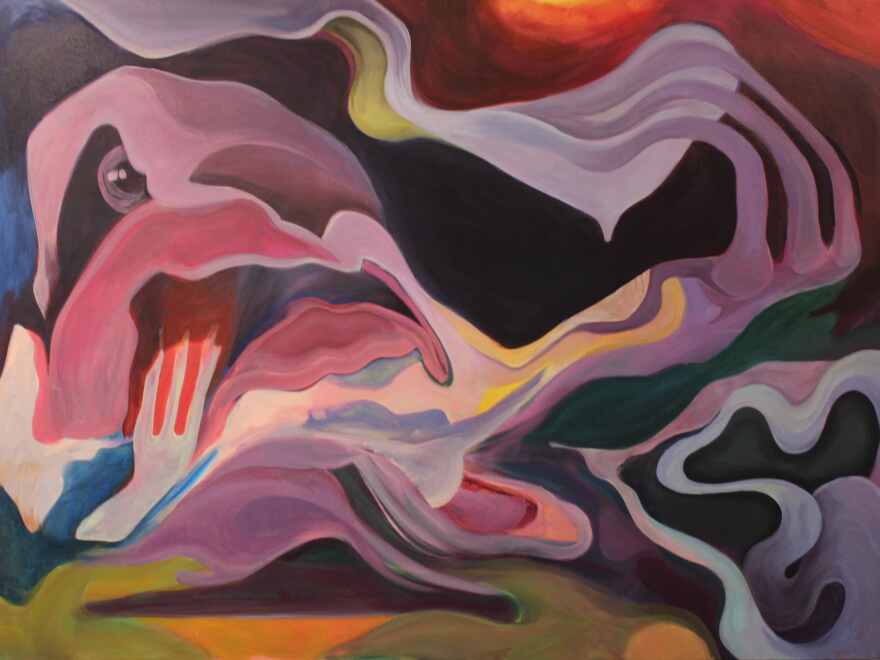“Compositions” is on view in the Theatre Gallery at the the Alliance for the Arts. It features paintings and prose by Latino artist Julio Gonzalez Batista. He goes by Julio Julio.
At the opening reception, Batista explained that he approaches his compositions without “inherent creative intent.” His artist statement accompanying the show amplifies that comment.
“In my current practice, I begin non-objectively – applying color and gesture devoid of conceptual intent, inadvertently yielding natural forms that, to me, look like landscapes, figures, creatures and everything in between.”
At some point, the images speak to him, prompting him to analyze what he finds within the “initial chaos.”

“I build compositions intuitively, often covering and bringing back out elements to explore any aesthetic choice possible,” his statement explains. “From these outcomes, I title my artworks based on the monsters or vistas I find in them, clueing you into my view while still hoping you’ll find something new.”
As he’s working through this process, he lets his mind wander randomly. Commonly, his thoughts bear little or no relationship to the images that spring from his canvas.
“I write brief compositions based on those thoughts, which is why I titled this exhibition ‘Compositions,’” Batista explained. “The title relates to my compositional analysis of the pieces as well as the written compositions that I have on display. They're not narratively attached.”

The artist statement continues:
“Though the figures and vistas I make are devoid of a grounded narrative, the creative process makes room for thoughts both attached and detached from the artworks themselves. These thoughts I ruminate on while making often become narratives of their own and I make simple, diaristic compositions out of them, oftentimes ignoring grammatical rules and making up words to mirror the train of thought that took me to the pitstop in the first place.”

Their presentation is as interesting as the compositions themselves.
“I grew up in Cuba,” Batista explained. “We didn't have a dryer, just clotheslines. I really like that manual labor look to them, so using leftover paint from the pieces, I painted paper, cut the pieces into smaller chunks, and rewrote the compositions onto the cut-up pieces of paper. Then I attached them on the cloth line, assembled them color-coordinated with each section of the exhibit.”

While Batista initially resisted the request to categorize his work, he ultimately relented, labeling it “corporeal abstraction.”
“Even though my pieces don't necessarily talk about just one topic, bodies and body parts, more than anything, manifest themselves in the pieces,” Batista said. “So that's why I label them as corporeal. But I do classify [my paintings] as non-objective because I hope the viewer can find something in it that I didn't inherently put there on purpose.”
In that regard, Batista falls in line with the vast majority of contemporary modern artists.

While his inspiration and the feelings to which he is giving expression are not unimportant, it's basically up to the viewer to fashion their own connection to the painting.
“Yeah, I use my titles to clue the viewer into what I personally see,” Batista conceded. “But I hope that they take it with creative liberty, the work itself, and find some meaning in it that I didn't find.”
The artist statement for the exhibition completes the picture of Batista’s process.
“These methods of work favor fun over direction as a way to reclaim my creative joy, and to bring out a playground of possible narratives out of each composition to explore the relationship between the viewer’s interpretation and the artist’s one pillar to stand on – the finished artwork itself.”

Batista noted during the opening reception that some of his earliest memories are of him drawing or doodling.
“But I started honing into it more when I got in middle and high school,” Batista said. “[Art] became the class that I felt most at peace with. So that's where I actually felt the liberty to be completely myself.”
Batista said he was fortunate to have great mentors during his years in middle and high school. But he credits his family with providing his creative spark.
“Many members of my family have an artistic eye of sorts,” said Batista. “My mom was a hairdresser, so obviously there's an artistic analysis to that. My sister's a photographer. She does professional photography, so she's a professional artist in her own right. But I would say that I'm the first, like more creatively. I don't know how to describe it exactly but pursuing art as art only and not really a profession attached to that artistry.”

Prior to “Compositions,” Batista last exhibited work as part of his senior thesis exhibition at FGCU in December of 2023.
“So, this is my first official show since graduating,” said Batista proudly.
Support for WGCU’s arts & culture reporting comes from the Estate of Myra Janco Daniels, the Charles M. and Joan R. Taylor Foundation, and Naomi Bloom in loving memory of her husband, Ron Wallace.







